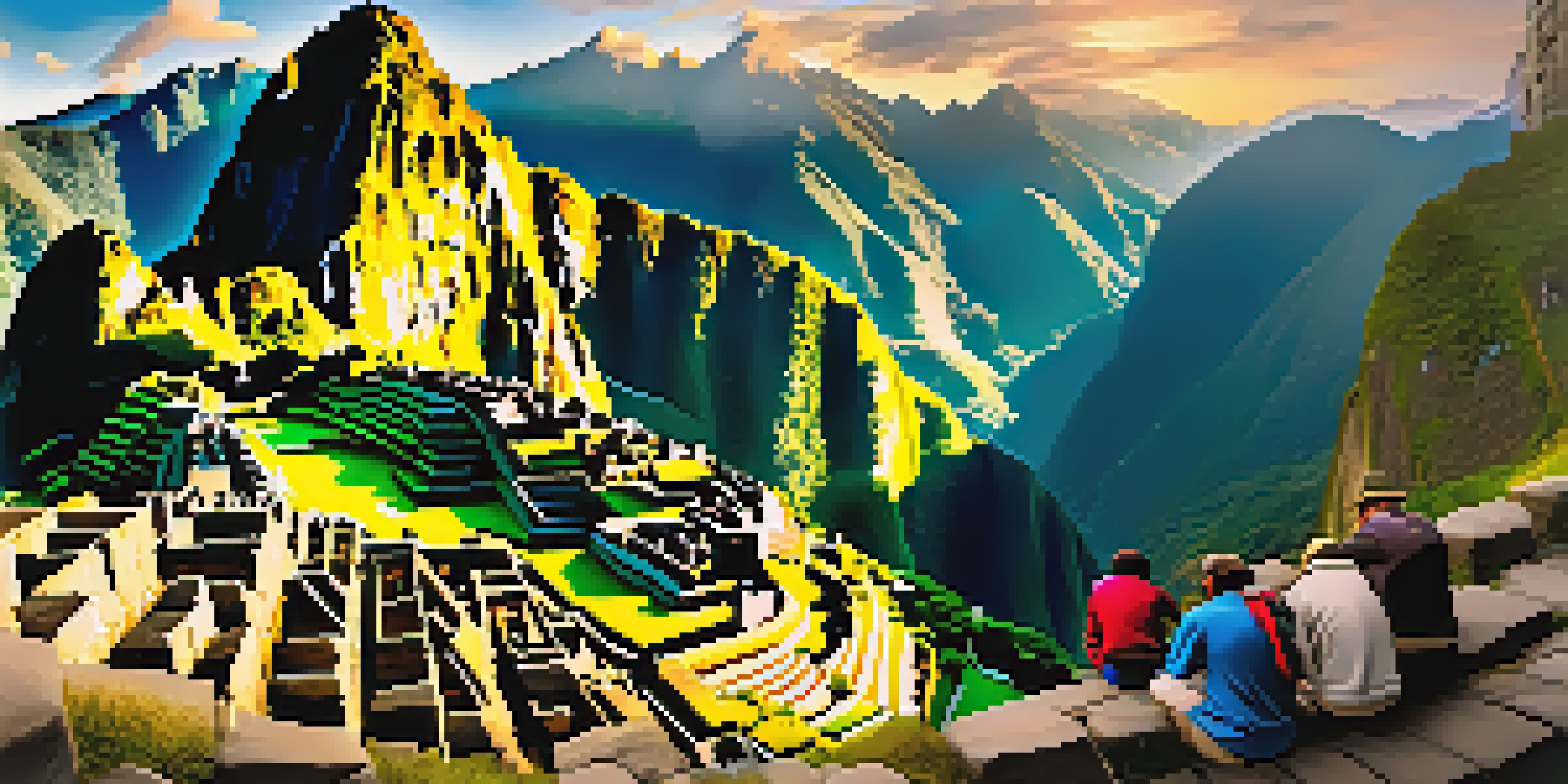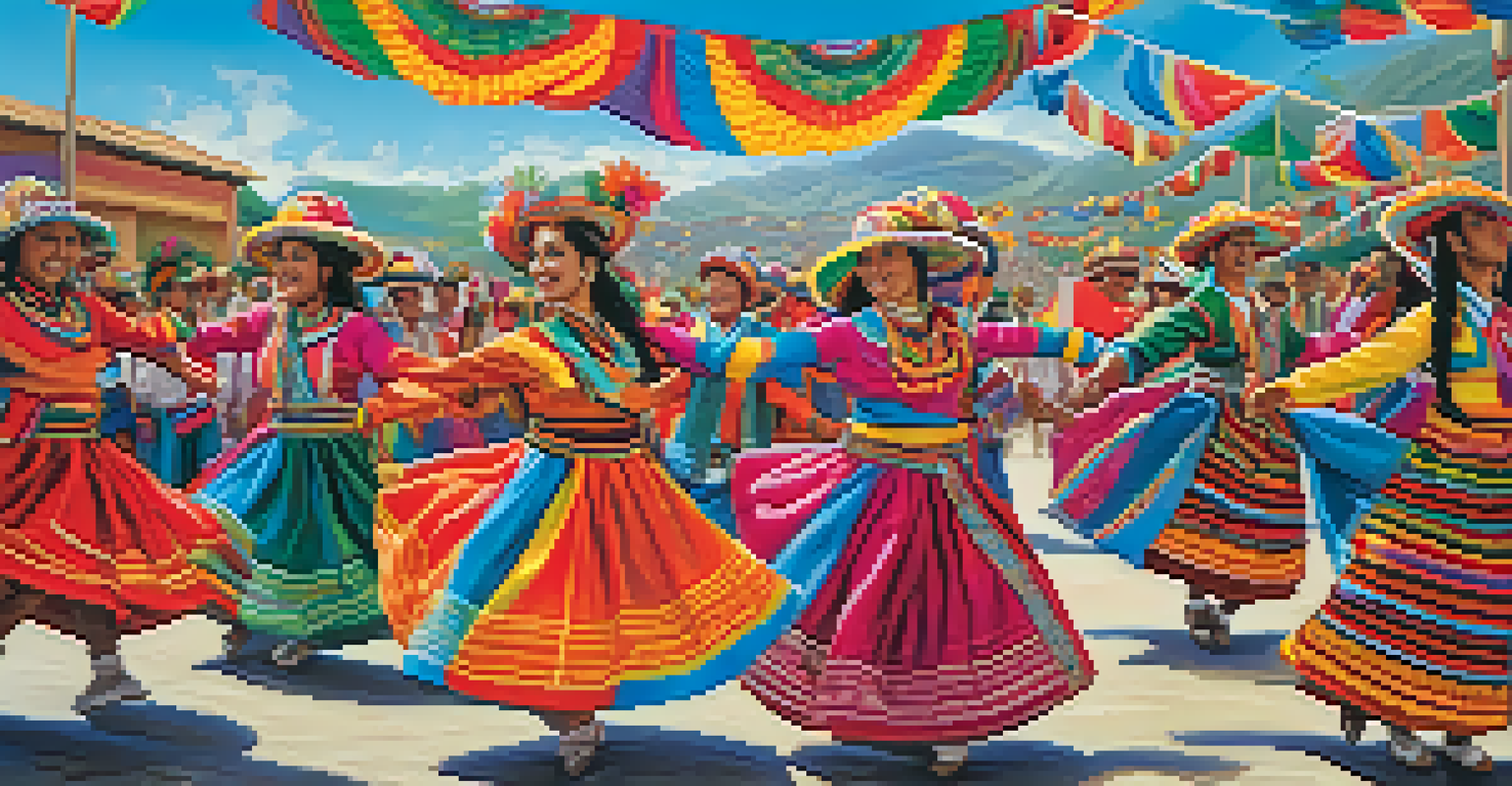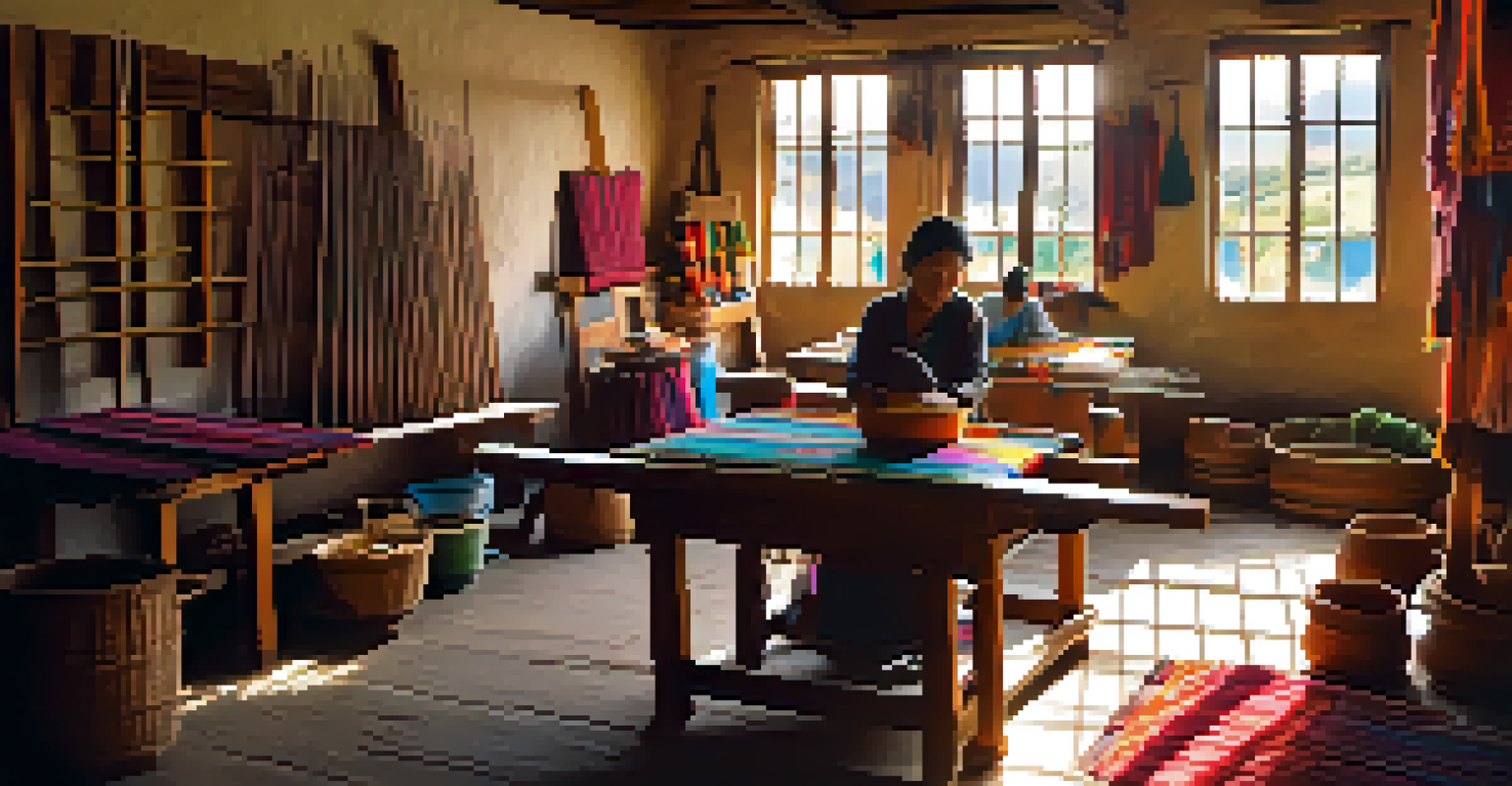Cultural Heritage Tourism: Preserving Peru's Rich Legacy

Understanding Cultural Heritage Tourism in Peru
Cultural heritage tourism is all about experiencing and appreciating the history, art, and traditions of a place. In Peru, this concept comes alive through its ancient ruins, vibrant festivals, and unique customs. Tourists often seek to connect with the rich legacy of the Inca civilization, which is woven into the fabric of modern Peruvian life.
Traveling – it leaves you speechless, then turns you into a storyteller.
By visiting sites like Machu Picchu or the Sacred Valley, travelers immerse themselves in Peru's storied past. This type of tourism doesn't just benefit visitors; it also helps local communities thrive by creating jobs and encouraging the preservation of cultural practices. It's a win-win scenario where both tourists and locals gain a deeper appreciation for their shared heritage.
In essence, cultural heritage tourism serves as a bridge between the past and the present. It fosters a sense of identity and pride among Peruvians while providing visitors with unforgettable experiences that highlight the beauty of their traditions. This symbiotic relationship is key to understanding the importance of preserving Peru’s cultural legacy.
The Importance of Preservation in Cultural Heritage
Preserving cultural heritage is crucial for maintaining the identity of a community. In Peru, many local traditions and historical sites are at risk due to modernization and environmental changes. By focusing on preservation, we can ensure future generations inherit a rich cultural tapestry that reflects their history and values.

Efforts to protect sites like the Nazca Lines or the historic center of Cusco highlight the importance of safeguarding these treasures. These locations not only attract tourists but also hold significant meaning for the local population. Preservation initiatives help educate visitors and locals alike about the historical significance of these sites, fostering a deeper connection to the land.
Cultural Heritage Tourism Benefits All
Cultural heritage tourism in Peru enriches both visitors and local communities through job creation and cultural appreciation.
Moreover, preservation goes hand-in-hand with sustainability. By promoting responsible tourism practices, Peru can protect its cultural heritage while supporting economic growth. This balance is essential for ensuring that tourism does not come at the cost of the very traditions that make Peru unique.
Engaging Local Communities in Tourism Efforts
Local communities play a vital role in cultural heritage tourism, as they are the custodians of their own stories and traditions. Engaging these communities in tourism efforts not only empowers them but also enriches the visitor experience. When tourists interact with locals, they gain authentic insights into the culture, making the journey more meaningful.
Cultural heritage is the bridge to understanding and respecting our differences and similarities.
For instance, many communities offer workshops where visitors can learn traditional crafts or cooking techniques. These experiences foster mutual respect and understanding, turning tourism into a two-way exchange. By supporting local artisans and guides, tourists contribute to the economic well-being of the community while also ensuring that these skills are passed down through generations.
Additionally, community involvement in tourism helps to promote a sense of pride in cultural heritage. When locals see the value in sharing their traditions, they become more invested in preserving them. This not only benefits tourism but enriches the cultural landscape of Peru as a whole.
Challenges Facing Peru's Cultural Heritage Sites
Despite its rich cultural assets, Peru faces several challenges in preserving its heritage sites. Issues such as climate change, urban development, and inadequate funding pose significant threats. For example, the increasing number of visitors to Machu Picchu has led to concerns about its structural integrity and environmental impact.
Moreover, many smaller heritage sites lack the financial resources necessary for maintenance and conservation. This often results in neglect or damage that could have been avoided with proper funding and management. Raising awareness about these challenges is essential to garnering support for preservation efforts.
Preservation is Key for Future Generations
Protecting Peru's cultural heritage is essential to maintain community identity and ensure that traditions are passed down.
Ultimately, tackling these challenges requires collaboration between government bodies, NGOs, and local communities. By working together, stakeholders can create sustainable tourism strategies that prioritize the preservation of cultural heritage while ensuring that tourism continues to thrive.
The Role of Education in Cultural Heritage Tourism
Education plays a pivotal role in promoting cultural heritage tourism. When tourists are informed about the significance of the sites they visit, they are more likely to engage respectfully and thoughtfully. Educational programs can help bridge the gap between tourists and local communities, fostering understanding and appreciation.
Schools and universities in Peru are increasingly incorporating cultural heritage topics into their curricula. This not only educates the younger generation about their roots but also prepares them to participate in the tourism industry as knowledgeable guides and ambassadors. By nurturing a sense of pride in their heritage, they are more likely to advocate for its preservation.
Furthermore, educational initiatives can extend beyond the classroom. Workshops, guided tours, and cultural events provide opportunities for tourists to learn directly from locals. This interactive approach enriches the travel experience and promotes a deeper connection to Peru's diverse heritage.
Sustainable Practices in Cultural Heritage Tourism
Sustainability is a key consideration in cultural heritage tourism, ensuring that the benefits of tourism do not come at the expense of cultural integrity. Sustainable practices focus on minimizing environmental impacts while maximizing positive social outcomes. This approach is essential for preserving the cultural landscape of Peru for future generations.
For example, many tour operators now prioritize eco-friendly practices, such as using local materials and supporting community-run projects. By choosing to work with local artisans and guides, tourists can contribute to the local economy while also reducing their carbon footprint. This creates a more sustainable tourism model that respects both the environment and the culture.
Community Engagement Enhances Tourism
Involving local communities in tourism efforts fosters authentic experiences and strengthens cultural pride.
In addition, promoting responsible tourism habits among visitors is crucial. Encouraging tourists to respect local customs and follow guidelines ensures that cultural heritage sites remain intact. By fostering a culture of sustainability, Peru can continue to thrive as a destination while preserving its rich legacy.
The Future of Cultural Heritage Tourism in Peru
The future of cultural heritage tourism in Peru looks promising, with increasing awareness of the need for preservation and sustainable practices. As more travelers seek authentic experiences, the demand for cultural tourism is likely to grow. This shift presents an opportunity for Peru to showcase its rich history while prioritizing the well-being of its communities.
Innovative approaches, such as virtual tours and digital storytelling, can also enhance the visitor experience. These technologies offer new ways for tourists to engage with cultural heritage while reducing physical impacts on sensitive sites. By embracing these tools, Peru can reach a global audience eager to learn about its history.

Ultimately, the future hinges on collaboration among stakeholders, including the government, local communities, and the tourism industry. By working together to create sustainable and educational tourism initiatives, Peru can ensure that its cultural heritage remains vibrant and accessible for years to come.